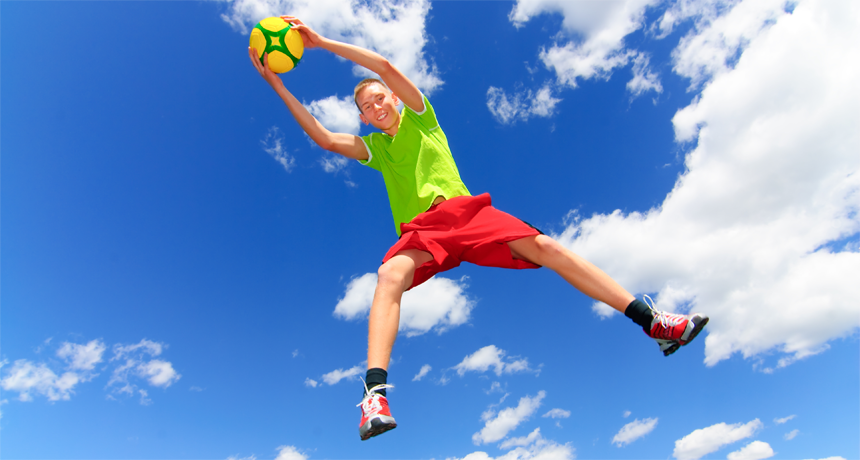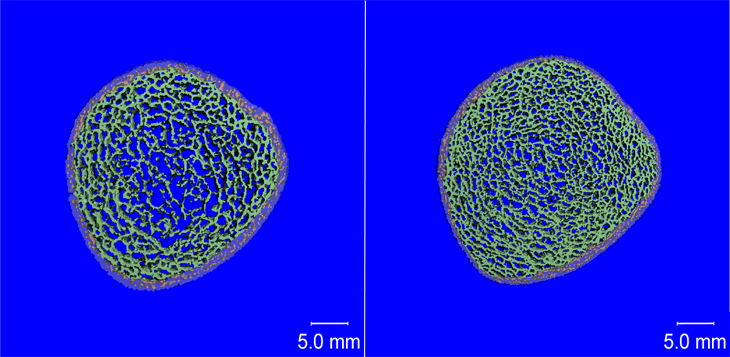Active teens build strong bones for life
Tweens and teens who run, jump and dance may become adults with less breakable bones

As much as a third of an adult’s skeleton will form during adolescence. So the more active someone is during this time, the stronger those bones will become.
Yarexphoto/iStockphoto
Adolescence is a critical time for growing strong bones. That’s especially true between the ages of 10 and 14 in girls, and 12 to 16 for boys. As much as 36 percent of the adult skeleton forms during these four years. But how strong those bones become depends on how active someone had been during those formative years. That’s the finding of a new study.
“The bigger the bones children make when they are young, the harder it will be to break when they get older,” explains Laura Tosi. She’s a doctor who was not involved in the new work. But she knows the topic well. Tosi directs the Bone Health Program at Children’s National Medical Center in Washington, D.C.
Leigh Gabel led the new study. She is a bone-health researcher in Canada at the University of British Columbia in Vancouver. Her team measured the physical activity of more than 300 students from local schools over the course of four years. The kids ranged in age from 9 to 20. There were about four boys taking part for every five girls.
For a week each year, the recruits wore small devices on a belt around their waists called accelerometers (Ak-sel-ur-OM-eh-turz). They record the motion of something — in this case, a student. The devices logged each up and down movement, the intensity of those movements and how long someone stayed active. This gave the researchers a sense of how active — or not — each student tended to be at a given age.
At the end of the four years, the researchers X-rayed each recruit’s leg and wrist bones. These bone scans were used to scout for signs of bone strength. Larger bones tend to be stronger, for instance. So are denser bones. (Density is a measure of how compact something is.) And the researchers also examined the pores, or spaces, inside those bones. All bones have such spaces. But stronger bones have fewer pores and smaller ones.
The team then compared such bone-strength factors in the kids who had averaged at least 60 minutes of moderate to vigorous activity per day against those who didn’t manage even 30 minutes of such exercise daily. “Moderate to vigorous activity means more intense than a walk,” Gabel says. Jogging or running would qualify.
Gabel and her team compared the leg and wrist bones of the most active 75 or so kids to the least active 75. After four years, the most active group had bones that were 8 percent stronger than the least active group.
The team reported its findings March 22 in the Journal of Bone and Mineral Research.
Story continues below image.

“Eight percent is significant,” says Gabel. “It could make the difference between breaking a bone down the road — or not.” When older adults with weak bones break their hips or spines, they can end up in a wheelchair. If they’re elderly, some will never be able to again walk without assistance.
The type of activity matters for bone strength. Bones get stronger when a person does “load-bearing” or “weight-bearing” exercise. These are activities that put pressure on bones. Examples include jumping, running, dancing, basketball and gymnastics.
“Bones particularly like short bursts of intense physical activity,” Gabel says. “But the good news is that it could be something as simple as dancing in your living room or playing tag.”
Swimming is great for building healthy hearts and muscles, but it’s not so great for building strong bones. That’s because it is not a load-bearing activity. Gabel was a competitive swimmer as an adolescent. She says if she knew then what she does now, she would have mixed up her sports. “I would have thrown in jumping or gymnastics,” she says.







